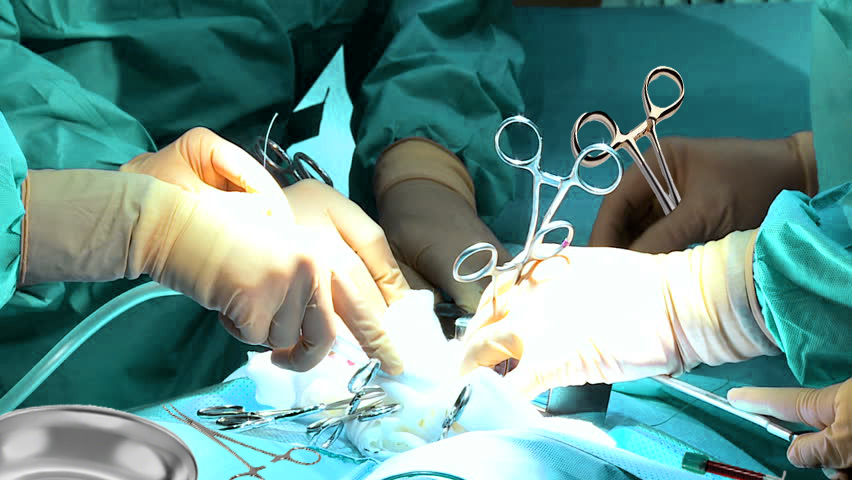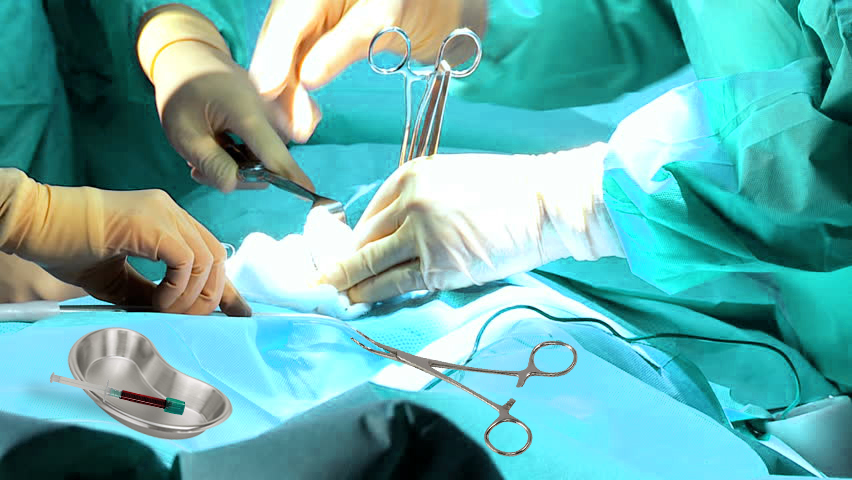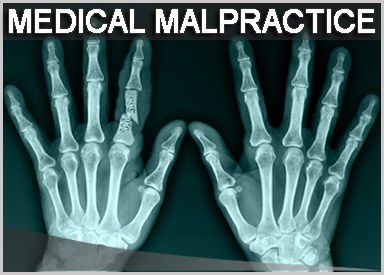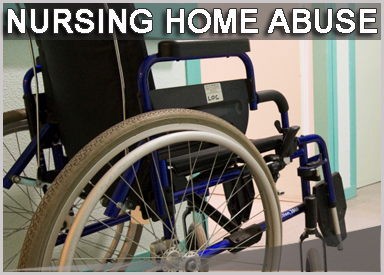Your Medical Malpractice Lawyers
Your Christian Law Firm, Dean Burnetti Law represents Motorcycle Accident Injury Victims in Polk County, including: Lakeland, Auburndale, Bartow, Haines City, Lake Wales, Mulberry, Polk City, and Winter Haven; in Hillsborough County, including: Brandon, Tampa, and Plant City; in Pinellas County, including Clearwater, St. Pete, Gulfport, Treasure Island, Largo, Oldsmar; and all of the surrounding Greater Central Florida and West Central Florida Areas.
Psalm 30:2 - “Lord my God, I called to you for help, and you healed me.”
Medical malpractice and medical negligence can occur in doctors’ offices, surgical centers, and hospitals, as well as in other places. They can involve nursing homes, chiropractors, physicians, surgeons, dental specialists, psychiatrics, or other professionals involved in the medical community of care, treatment, and medical testing.
 Medical malpractice occurs when a medical provider fails to comply with the prescribed duty of care, meaning how other doctors with similar credentials would handle the situation (i.e., surgery, medication, etc.), and the result is harm (or death) to the patient. Oftentimes, people confuse medical malpractice with the more common medical negligence. Malpractice has element of “intent” that negligence does not. In a medical malpractice, the provider’s “intent” was most likely not a malicious intent for the sole purpose of causing harm to the patient. Rather, this type of “intent” is a legal term meaning that the medical provider had knowledge that they needed to take certain measures to treat a patient, and that without those measures, the patient could potentially suffer adverse consequences, but the provider still failed to provide those extra measures despite the potential outcome. An example of this may be that a provider failed to provide a costly diagnostic test because the patient didn’t have health coverage such as a child who complains of a pain in her legs, and the pediatrician attributes it to “growing pains” rather than sending her for further testing. The child goes home, and her parents ignore her further complaints until it is determined that she had bone cancer that had metathesized into other areas of her body, and the parents end up burying their child. In Florida, the Statute of Limitations allows 2 years from the date of the medical malpractice to file a claim (although there are limited exceptions that make it possible to extend the time).
Medical malpractice occurs when a medical provider fails to comply with the prescribed duty of care, meaning how other doctors with similar credentials would handle the situation (i.e., surgery, medication, etc.), and the result is harm (or death) to the patient. Oftentimes, people confuse medical malpractice with the more common medical negligence. Malpractice has element of “intent” that negligence does not. In a medical malpractice, the provider’s “intent” was most likely not a malicious intent for the sole purpose of causing harm to the patient. Rather, this type of “intent” is a legal term meaning that the medical provider had knowledge that they needed to take certain measures to treat a patient, and that without those measures, the patient could potentially suffer adverse consequences, but the provider still failed to provide those extra measures despite the potential outcome. An example of this may be that a provider failed to provide a costly diagnostic test because the patient didn’t have health coverage such as a child who complains of a pain in her legs, and the pediatrician attributes it to “growing pains” rather than sending her for further testing. The child goes home, and her parents ignore her further complaints until it is determined that she had bone cancer that had metathesized into other areas of her body, and the parents end up burying their child. In Florida, the Statute of Limitations allows 2 years from the date of the medical malpractice to file a claim (although there are limited exceptions that make it possible to extend the time).
 Medical negligence is far more common that medical malpractice, and has nothing to do with intent. As the name implies, medical negligence occurs when a medical provider causes harm to a patient because of errors, omissions, or mistakes in their medical judgment. An example would be when a healthy teenage boy is tackled during a football game and taken to the emergency room for pain in his chest, where the doctor diagnoses him as having bruised ribs. The boy then goes home and dies from a pulmonary embolism. Medical negligence can include delayed diagnosis or misdiagnosis, prescribing the incorrect medication, prescribing an incorrect dosage of medication, negligent prenatal care, negligent care during childbirth, errors involving anesthesia administration, and surgical mistakes such as puncturing or nicking another organ during surgery, leaving a surgical tool inside the patient, or failing to follow post-op protocol to avoid infection. As with medical malpractice, Florida Statute of Limitations allows 2 years from the date of the medical negligence to file a claim (although there are limited exceptions that make it possible to extend the time).
Medical negligence is far more common that medical malpractice, and has nothing to do with intent. As the name implies, medical negligence occurs when a medical provider causes harm to a patient because of errors, omissions, or mistakes in their medical judgment. An example would be when a healthy teenage boy is tackled during a football game and taken to the emergency room for pain in his chest, where the doctor diagnoses him as having bruised ribs. The boy then goes home and dies from a pulmonary embolism. Medical negligence can include delayed diagnosis or misdiagnosis, prescribing the incorrect medication, prescribing an incorrect dosage of medication, negligent prenatal care, negligent care during childbirth, errors involving anesthesia administration, and surgical mistakes such as puncturing or nicking another organ during surgery, leaving a surgical tool inside the patient, or failing to follow post-op protocol to avoid infection. As with medical malpractice, Florida Statute of Limitations allows 2 years from the date of the medical negligence to file a claim (although there are limited exceptions that make it possible to extend the time).
While medical malpractice and medical negligence are dangerous and potentially life-threatening, a medical provider’s rudeness, tardiness, or lack of seeming compassion or “bedside manner”, although aggravating (especially when you don’t feel your best), do not, in themselves, constitute “medical malpractice, negligence, or legal wrongdoing.”
Furthermore, it’s also equally, if not more important to understand that all medical mishaps or negative outcomes do not mean that the provider is guilty of medical malpractice or medical negligence. The practice of medicine is not an exact science – a “routine” surgery may not go routinely through no fault of the surgeon, but because the patient had more wrong than expected once they were opened up.
In the state of Florida, for a patient or their family to pursue a medical malpractice or medical negligence claim against a medical provider or facility, the facts must meet the threshold points prescribed by Florida law.
The truth is that very few medical malpractice lawsuits are ever actually filed with the court. Both medical negligence and medical malpractice lawsuits are complex and very expensive to pursue. One of the costlier aspects of medical malpractice or medical negligence cases is selecting and hiring an “expert witness.” In a medical malpractice or medical negligence case, an expert witness is another doctor, surgeon, specialist, or other type of medical or medical service provider with similar credentials and practice area experience as the provider who committed the alleged negligence or malpractice. The expert will carefully review all of the patient’s medical records, which may include records prior to or after the negligence or malpractice incident, and if the expert determines that a wrongdoing was actually committed, the attorney will then proceed with the case.
It’s also a fact that, oftentimes, patients just don’t have the kinds of significant injuries that justify the enormous cost of pursuing a medical malpractice or medical negligence case. This means that while many medical malpractice and medical negligence cases may be clearly good cases as far as meeting the elements of proof, too frequently, the medical damages are minimal and don’t justify the high cost of pursuing the claim. On average, medical malpractice cases incur legal costs of $50,000 to $150,000, and many cost even more. That means, in order to “win” a case, the verdict must far outweigh the cost to pursue the claim.
An example of such a claim is that over the summer, a teenager had a sponge left inside of him during a routine appendectomy. He developed an infection over the next few days, and his doctor ran tests, realized what had happened, and scheduled a second surgery. The sponge was removed, and the young man ended up spending an additional two days in the hospital while he recovered. While this sounds horrific, it actually happens more often than most people realize. The hospital takes the position that since they waived the costs of the second surgery, it cost the young man nothing. Since the teenager lived at home and was not employed, he had zero economic losses during his subsequent recovery period. Since it happened over the summer, he didn’t even miss any school. His parents were not billed for any additional time in the hospital. While the boy did have the inconvenience of going through a second laparoscopic surgery, the hospital treated him well and refused to pay a dime. Because of this, an attorney would not likely touch this case since the outcome was good, and no financial hardship was caused by the first surgery.
Unfortunately, it’s not unusual to get that kind of response in this type of claim. Medical providers and medical centers can afford to be arrogant about it because they know that most attorneys won’t front $75,000 or more to pursue a case involving leaving a sponge in someone when they only had to do a short second surgery to remove the sponge then put the patient on antibiotics. Since the surgeon and the facility already waived the cost of the additional surgery and medication, they know that very few attorneys will be able to justify taking that kind of case.
These statistics aren’t meant to minimize the experiences of people who have been the victims of medical malpractice or medical negligence. Medical malpractice and medical negligence does occur, and it can change an individual’s life by creating an economic burden due to additional medical bills as well as lost wages, physical and emotional pain and trauma, and the result can be physically and emotionally devastating.
These statistics also should not dissuade you from seeking the advice of an attorney if you feel that you have been wronged by a medical professional. Only an attorney who is experienced in the areas of medical malpractice and medical negligence can determine if the facts of your case can meet the threshold qualifications to pursue the matter through a Court of Law.
Dental malpractice in the State of Florida follows the same set of laws and regulations as medical malpractice or medical negligence. The Statute of Limitations allows 2 years from the date of the dental malpractice to file a claim (although there are limited exceptions that make it possible to extend the time).
Just as with a medical malpractice or medical negligence claim, an attorney would have to find an expert (in this case, another dentist, oral or maxillofacial surgeon, orthodontist, endodontist, periodontist, etc.) with similar credentials and practice area experience as the provider who committed the alleged dental malpractice, who would testify that the dentist or dental specialist you used actually did something wrong or negligent that caused your long-term problems. It would have to be proven that the dentist you used did not act with the same degree of skill and care that another dentist or dental specialist would have used.
Hospital acquired infections (also known as HAI’s or hospital infections) mostly stem from medical devices such as ventilators or catheters, while the remainder usually develop in a post-surgery situation. The most common hospital acquired infections are surgical site infections, catheter-associated urinary tract infections, central line-associated bloodstream infections, and ventilator-associated pneumonia. Common hospital infection types are C. diff (short for Clostridium difficile), which causes serious gastrointestinal problems or MRSA (short for Methicillin-Resistant Staphylococcus aureus) which is an extremely serious type of infection that can develop during or shortly after a hospital stay. MRSA develops quickly and can be life-threatening or even fatal! Many times, after infections are left untreated for too long, sepsis occurs. Sepsis is when an infection is spread throughout the body through the bloodstream. It can quickly lead to septic shock, which can be fatal.
While it’s true that surgical centers and hospitals have more than the average amount of the germs we come in contact with on a daily basis, the real problem is that people who are ill or who are undergoing surgery are more susceptible to infection from these germs. If a patient develops an infection while hospitalized, they should expect a rapid diagnosis and aggressive treatment. Most of the time, hospitals and surgical centers have multiple systems in place to protect patients from these infections. But on the occasion that the medical staff cuts corners with patient safeguards and the patient becomes infected, the hospital or surgical center, as well as its staff, can be held legally accountable.
Just as with a standard medical malpractice or medical negligence claim, before a claim could be filed in court, an attorney would need to locate an expert who would review all of the victim’s medical records and testify that the hospital or surgery center did not follow protocol to prevent the infection, or that they did not respond to the symptoms of infection in a timely manner.
Amputation injuries occur when additional injuries are incurred during a medical amputation operation. Over two million people in the United States live with some form of amputation from a partial finger or toe to all four limbs. There are 185,000 amputation surgeries each year, and that number is expected to double by the year 2050. There are numerous reasons for amputations, including diabetes or other medical conditions, auto accidents, work accidents, hobby accidents, sports accidents, infections, and even medical malpractice or medical negligence.
Though it’s difficult to believe, wrong side surgeries and amputations occur more frequently than we think, and far more often than should ever happen. In a Colorado study over 78 months, doctors in hospitals in the Centennial State operated on the wrong body part of 107 patients and performed 25 surgeries on the entirely wrong patient! In Rhode Island, over a 12-month period, a single hospital there reported three separate occasions of operating on the wrong side of three patients’ brains! Estimates show that in the United States, there are as many as three percent of amputations performed on the wrong side every year.
When a wrong side amputation occurs, the patient’s outcome is twice as devastating because they will still need the correct limb or appendage removed. To prevent wrong side amputations, the Joint Commission on the Accreditation of Healthcare Organizations requires surgeons to follow certain protocol, including:
- Marking the operation site and involving the patient in the process
- Requiring oral verification from the patient regarding the correct site by each member of the operating team
- Following a verification checklist that ensure that the limb being amputated is the correct limb and that the limb is in need of amputation
- Directly involving the operating surgeon in the informed consent process
- Engaging in ongoing monitoring to make sure verification procedures are followed
Even with these safety prevention markers in place, accidents can still happen for various reasons. For example, prior to operating, a member of your healthcare staff will write on you with a marker, indicating the limb or appendage to be amputated. However, if the symbols or other marking become smudged, this can lead to the wrong limb being amputated. If the x-ray or other scan is positioned incorrectly, it can appear as a mirror image of itself, meaning it will look as if the opposite side of the body is the problematic side, leading to a wrong-side amputation. Other wrong-side amputations are the result of a member of the healthcare team listing the wrong limb on the initial form, and the patient blindly signs the consent without thoroughly reading it first. While it seems incredulous and unimaginable that a skilled surgeon could actually operate on the wrong patient, if the patient has a similar (or even identical) name as another patient, or if the hospital or surgery center is understaffed, this can lead to such problems.
Besides wrong side amputations, there are a host of other issues that can go wrong during an amputation surgery that may fall under the medical malpractice umbrella, some of which might not even be known to the patient until a great deal of time has passed. An example of this would be when a child needs a limb amputated and the surgery seems to go well. The child heals quickly and appears to be fine until the day they start to grow… when their bone actually starts growing out of the end of their amputation site! Obviously, this would not only cause pain, but would require yet another surgery to sever the bone.
Another amputation surgery dilemma that happens more frequently than we realize is when the need for the amputation results from a catastrophic accident (such as a fire or lightning strike). Let’s say, for example, a body part is amputated, such as a foot. But then the lower shin starts to become infected, and in order to prevent gangrene from spreading, the doctor performs another surgery by way of a mid-leg amputation up to the calf. However, the infection still hasn’t been contained, and it spreads up the leg past the knee. After another amputation, the infection enters the groin area, passes through the femoral artery, and the patient dies after having endured more than three amputations on the same limb! If the limb would have been amputated high enough to start with, the infection could possibly have been avoided, and the patient may have lived.
Surgical amputation injuries can me more severe than other types of medical injuries because of the sheer disfigurement involved. Additionally, the victim will likely be required to purchase medical equipment such as a prosthesis for the remainder of their life, not to mention dealing with post-surgical rehabilitation and continued care. Because of the lost limb, the victim may be unable to continue their job and may have to find an alternative career that pays extensively less.
Because amputation and disfigurement case are so complicated, they usually involve more medical testimony than a normal case, and there will be far more medical records to study and digest. Because these cases are so complex, and typically involve more than one type of case (such as a personal injury case because of an auto accident which caused the need for the amputation which went wrong, causing an additional medical malpractice case). That’s why you will need an attorney who is highly experienced in all facets of personal injury and medical malpractice claims.
Birth injury is a term used by the legal community to define damage or injury to an infant before, during, or immediately following the birthing process. There are many types of birth injuries which include numerous levels of severity. While some birth injuries are temporary, others are permanent and last for the duration of the infant’s life. Furthermore, while some birth injuries are immediately noticeable, others may not be realized until some time later, such as when the infant starts failing to perform certain developmental mile markers (such as rolling over, crawling, etc.), or even later when the child starts attending school.
Brain-related birth injuries can manifest themselves in several ways, and are most often caused by the deprivation of oxygen during the delivery process. The term “Hypoxic Ischemic Encephalopathy” is a general term that describes the depravation of the infant’s oxygen during the birthing process and the consequences that result from that deficiency.
Brain-related birth injuries include hypoxia, anoxia, perinatal asphyxia, birth asphyxia, brain ischemia, brain hemorrhage, and cerebral palsy. Cerebral palsy tops the list of most common birth-related brain injuries. Often, cerebral palsy is thought to be a muscle-related ailment because many who suffer from it have partial to complete loss of muscle control. However, it is actually a brain-related injury because it affects the way the brain communicates with the body’s muscles.
A brain ischemia occurs when the brain to reacts to a deprivation of oxygen by draining blood from the brain. Excessive blood pooling in the brain is defined as a brain hemorrhage. Oxygen deprivation can also cause seizures, electrical disorders between the brain and the spine, and can lead to infant stroke.
Brachial plexusis a common, muscle-related, physical birth injury that occurs when the infant’s upper arm is injured during delivery. Aside from muscle weakness or the inability to use certain muscles in the injured arm, the infant’s shoulder and hand may also be damaged. It’s also not uncommon for brachial plexus to cause a burning sensation in the length of the arm.
Erb’s palsy is a form of brachial plexus where the nerves of the upper arm are affected during the birth injury. Erb’s palsy may cause weakness and/or the loss of feeling in the affected arm. In extreme cases, the affected arm may be completely paralyzed.
Klumpke’s palsy is another form of brachial plexus where there is damage to the nerves in the lower arm. The damage to these nerves affects not only the arm, but also the wrist, hand, and fingers. An infant with Klumpke’s palsy not only will suffer from complete paralysis in the affected arm, the affected hand will likely not develop properly, and will permanently remain in an underdeveloped closed hand “claw.”
Shoulder dystocia, though extremely rare, is a birth injury that results from the infant’s head and shoulders being stuck behind the mother’s pelvic bone during delivery. Complications from shoulder dystocia can be extremely severe, and occasionally can be fatal. This kind of birth injury can also affect the mother by causing her to hemorrhage or cause her uterus to rupture, while the infant may experience cerebral palsy, a collarbone fracture, breathing difficulties, a brachial plexus fracture, and occasionally, death.
The group B strep infection and meningitis are both passed to the infant form the mother, and both have serious, and occasionally fatal outcomes. Because nearly 25% of pregnant women carry either of these infections vaginally with no symptoms, their children catch these infections from passing through the birth canal. Therefore, the obstetrician has a duty to detect and treat these and/or any other problems that can affect the child (such as genital herpes that are active at the time of delivery), or to bypass the mother’s affected vaginal area by scheduling a caesarian section delivery.
Spina bifida, fetal anemia, and folic acid deficiency are all serious conditions that an infant develops during gestation. Studies show that these can possibly be prevented with proper testing and by the obstetrician prescribing certain supplements to the mother.
Meconium aspiration syndrome is a birth injury that occurs when the infant is under stress from a long and difficult delivery. The infant’s bowels release their contents into the uterus, and the baby then breathes in the meconium, causing severe breathing difficulties after birth.
Other birth injuries that arise during delivery are often caused by the medical equipment used to aid in the delivery, such as forceps, vacuum extractors, or other surgical tools. These injuries can cause temporary and/or permanent disfigurement in addition to a host of other physical problems.
Further difficulties may be caused by either a reaction to medication administered during delivery or the medical staff mishandling the infant, or even both. Some of these types of birth injuries might include lacerations, broken or fractured bones, or even infant skull fractures!
Sadly, it’s not uncommon for a difficult delivery to lead to the baby developing a condition related to hypertension or high blood pressure. This can lead to a rapid heartbeat, cyanosis (which is a bluish tinge to the skin that results from poor circulation or inadequate oxygenation of the blood), or even a heart murmur.
 Plastic Surgery Injuries and Cosmetic Surgery Injuries unfortunately happen more frequently than anyone would like to see them.
Plastic Surgery Injuries and Cosmetic Surgery Injuries unfortunately happen more frequently than anyone would like to see them.
A lot of people think that plastic surgery and cosmetic surgery are one in the same. The fact is, though they are closely-related specialties, they’re actually quite different. While both deal, in a broad sense, with improving a patient’s physical appearance, the surgeon’s type and level of training, as well as the reasons and ultimate goals for patient outcomes are dissimilar.
The main focus of cosmetic surgery is to enhance the appearance, or beauty, of the patient. Just as the name suggests, it is “cosmetic.” It deals with improving the symmetry and proportion of a patient’s face or body, as well as enhancing the overall aesthetics of their person. It can be performed on all areas of the face, head, neck, and body, and includes such elective surgeries as breast augmentation, facial contouring or facelift, rhinoplasty, Botox treatment, tummy tuck, laser treatment for wrinkles, and liposuction. Quite simply, an otherwise healthy person elects to get cosmetic surgery our of a desire to improve or alter their face or body, whether they were born with a perceived “imperfection” (such as a large nose or small breasts), or they “developed” the “imperfection” over the course of their life (such as wrinkles or excess body fat), or they willingly “caused” the “imperfection” and want it reverted to its previous state (such as tattoo removal).
Another term for “plastic surgery” is “reconstructive surgery.” In contrast to cosmetic surgery, the purpose of plastic surgery is to repair defects (whether present at birth or as the result of an injury or accident) for the purpose of reconstructing a normal appearance, and in some case, repairing improperly working body parts (such as a cleft palate wherein the person’s front teeth protrude from their lip and are unable to be used to eat, or a severely broken nose that doesn’t allow the person to breath or smell). Plastic surgery can make the appearance of birth defects look more “normal”, repair physical defects resulting from burns, severe lacerations, or other severe trauma (such as a bone crushed so badly in an accident that it is not only useless, but disfiguring), and physical defects that result from illnesses such as cancers. Examples of plastic surgery include cleft palate repair, burned skin repair, breast reconstruction after trauma such as a mastectomy, scar reduction or revision, and extremity defect repair or reconstruction.
In addition to the differences listed above, plastic surgeons train in a post-graduate residency program which requires either 3 years of general surgery and 3 years of plastic surgery experience, or a 5-year residency program in general surgery followed by the 3-year plastic surgery residency program. Cosmetic surgery training is completed after residency training, and because there are no residency programs in the U.S. exclusively devoted to cosmetic surgery, cosmetic surgeons receive their training by completing a post-residency fellowship.
Now that we’ve established the differences in plastic surgery and cosmetic surgery, let’s look at how they are alike. While both can greatly improve not only the appearance, but the quality of life of the recipient, both also run the risk of medical complication. Some of the more common medical problems associated with both plastic surgery and cosmetic surgery include:
Nerve Damage. While tingling and numbness can be common after plastic or cosmetic surgery, they can also be signs of nerve damage.
Infection. Cellulitis and internal infections, though rare, are not unheard of as a result of plastic or cosmetic surgery.
Scarring. While most surgeries often cause some degree of scarring, because plastic or cosmetic surgery’s purpose is to improve the patient’s appearance, any scars left from these surgeries can be especially upsetting. Sometimes, a patient will develop a raised, dark red scar, called hypertrophic scarring, and this leaves them feeling more ill at ease about their appearance than they were before they had surgery.
Complications from General Anesthesia. Complications from general anesthesia, can include strokes, heart attacks, and even death.
Deep Vein Thrombosis. Occasionally during surgery, a patient can develop blood clots deep in the veins of their leg(s). This is known as deep vein thrombosis. The danger is when one of these clots break away and travel to the lungs. When this happens, it is known as a pulmonary embolism, which can be fatal.
Nerve or Organ Damage. Liposuction can be especially traumatic when punctures or visceral perforations to the patient’s internal organs or nerves are caused by the surgical probe. These injuries can require additional surgery by a different surgeon, or may even lead to death.
Hematoma. A hematoma is a blood pocket that looks like a large, dark bruise. It’s the most common complication after a facelift, and in nearly 6 percent of breast augmentation procedures. While hematomas are actually a risk factor in most surgeries, their treatment sometimes requires an additional surgery to drain the blood.
Seroma. A seroma resembles a large blister. It occurs when blood serum pools beneath the surface of the skin. It causes both swelling and moderate to severe pain, and it is the most common complication of a tummy tuck. Because seromas can become infected, they usually require being drained with a large needle, though there is a chance of recurrence after the procedure to drain them.
Blood Loss. As with any surgery, a minimal amount of blood loss is expected. Nevertheless, there are times during (any)surgery where the loss of blood becomes uncontrollable. This can lead to a severe drop in blood pressure and with a potentially fatal result. The loss of blood most frequently happens while on the operating table, but it is also not uncommon to occur internally post-surgery, and may not be discovered for hours or even days. In these cases, additional surgery will likely be required.
General Appearance Dissatisfaction. While many people are content with the end results of their cosmetic surgery or plastic surgery, disappointment with the outcome is a prospective possibility.
Laser hair removal injuries take away from the liberating idea of tossing away the razors, hot wax, or other depilatory procedures. While laser hair removal can provide a feeling of freedom, it can also be dangerous when it’s not performed by an experienced technician. Unlike many of the medical malpractice issues discussed above, the person who performs your laser hair removal doesn’t need to hold a medical degree, or even a high school degree, for that matter! While it’s not uncommon for spas and salons to offer laser hair removal on their services menu, imagine your horror of leaving your favorite go-to pampering place with a painful or disfiguring injury.
Common laser hair removal injuries include:
- Lingering redness
- Painful sores or blisters
- Wounds that won’t heal
- Infection
- Second and third-degree burns
- Blood loss
- Shock
If you are the victim of laser hair removal gone wrong, you may have the right to bring a legal action against the person or establishment who performed your procedure. If a doctor was involved, your case would fall under the medical malpractice statute of limitations, meaning you would have 2 years from the date of your injury to file a lawsuit with the court. If no medical facility was involved (because a hair removal technician is not required to have a medical license to perform laser hair removal), it would fall under the personal injury statute of limitations, meaning you would have 4 years from the date of your injury to file a lawsuit with the court.
Matthew 9:12 “...Jesus said, ‘It is not the healthy who need a doctor, but the sick.’”
Call (863) 287-6388 in Polk County or (813) 287-6388 in Hillsborough County and Pinellas County today to schedule a free confidential consultation with an attorney at Your Christian Law Firm, Dean Burnetti Law.

Our Statement of Faith
We declare that Jesus Christ is the Lord of all. That the Holy Spirit abides in the midst of all within our halls. That the power of prayer is our shield and sword.
We declare that Christ is the cornerstone of this firm.
LAKELAND OFFICE:
1937 East Edgewood Drive, Suite 102,
Lakeland, Florida 33803
Lakeland: (863) 287-6388
BRANDON OFFICE:
413 Lithia Pinecrest Road,
Brandon, FL 33511
Brandon: (813) 287-6388
ST. PETE OFFICE:
11300 4th Street N., Ste. 140,
St. Petersburg, FL 33716
St. Pete: (813) 287-6388










